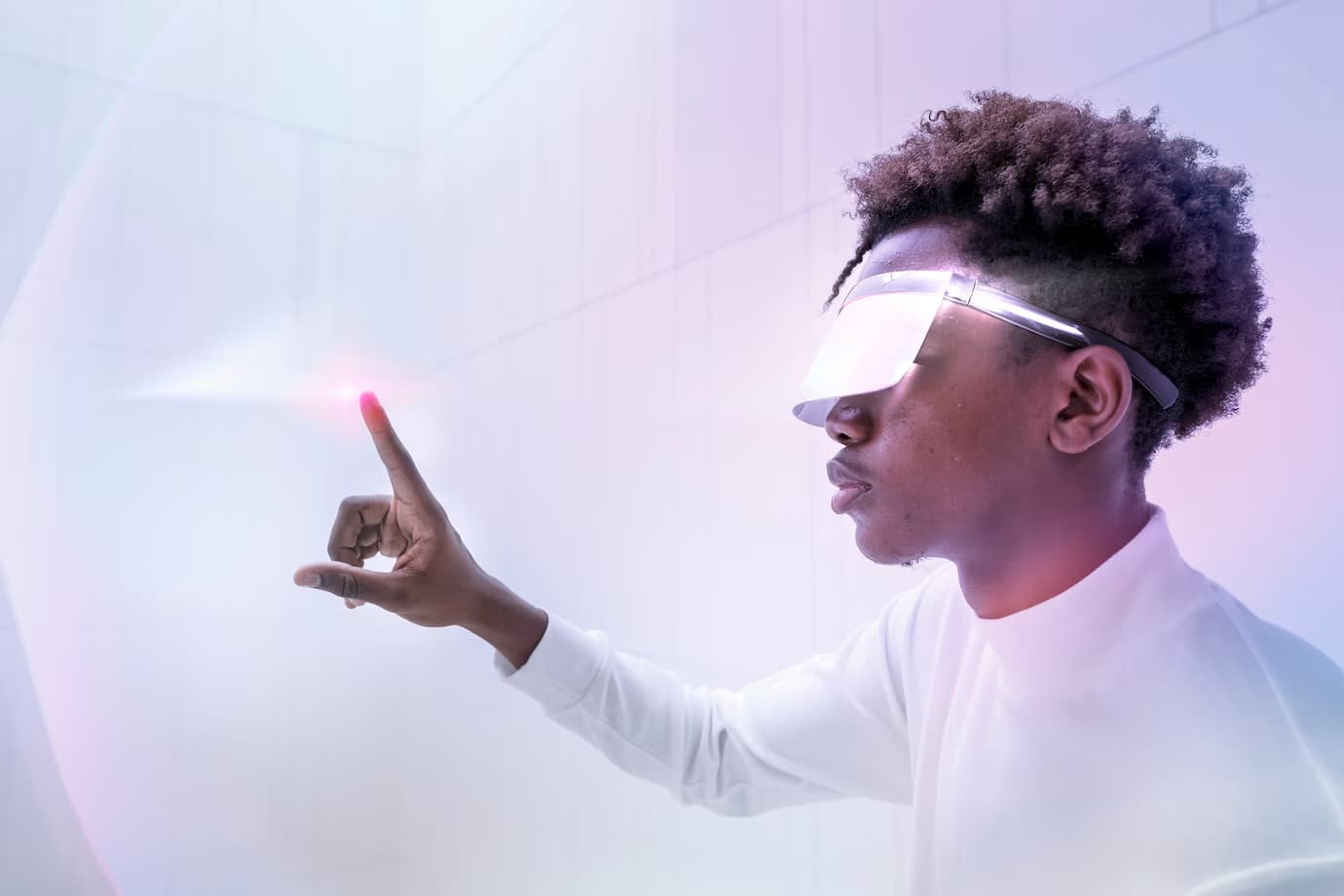When we imagine the future, our minds often jump to flashy, cinematic concepts like flying cars and personal jetpacks. Yet, the true technological revolution of the coming decade is poised to be far more intimate and profound. By 2035, the very idea of a “gadget” as a distinct object we hold in our hands will feel archaic. The next wave of technology won’t be about a better smartphone; it will be about the dissolution of the device itself into our environment, our bodies, and our daily consciousness. The future isn’t a new object to own, but a new reality to inhabit, driven by three core shifts: the rise of ambient computing, the dawn of the proactive digital co-pilot, and a revolution in the physical materials that bring technology to life. We are moving from a world where we command our devices to a world where our environment anticipates our needs.
The Ambient Computing Weave: Technology as an Environment
Forget the smart home as a collection of internet-connected appliances. By 2035, we will be living within an “ambient computing weave.” This is a paradigm where computational power is so deeply and seamlessly integrated into our surroundings that it becomes as invisible and expected as electricity. Our homes, offices, and even public spaces will function as holistic, intelligent systems. Imagine walls made of e-ink composites that can transform into vibrant art, a data dashboard for your morning meeting, or a soft, calming light source in the evening. Your kitchen countertop will not only charge your devices wirelessly but also identify the ingredients you place on it, suggesting recipes based on your health profile and the remaining shelf life of your groceries.
This environmental intelligence will be context-aware and deeply personalized. The lighting and temperature in a room will adjust automatically not just to the time of day, but to your biometric signals, calming you when you’re stressed or energizing you when you’re sluggish. Audio will be equally fluid; music will follow you from room to room, transitioning seamlessly from a full-room speaker system to a personal directional speaker embedded in your chair, audible only to you. This isn’t about giving voice commands to a dozen different devices. It’s about the environment itself passively observing, learning, and adapting to provide a frictionless living experience. The ultimate gadget is one that disappears entirely, leaving only its function behind.
Proactive Personalization: The Rise of the Digital Co-Pilot
The artificial intelligence of today is primarily reactive. We ask a question, and it finds an answer. We give a command, and it performs a task. The AI of 2035 will be proactive, functioning less like a servant and more like a dedicated “digital co-pilot” for your life. This entity will be a personalized AI, synthesized from your data, that works in the background to streamline your existence and enhance your capabilities. Its interface may be a tiny, near-invisible earbud, augmented reality contact lenses, or most likely, a combination of subtle sensory cues. This co-pilot will go far beyond managing your calendar.
Its role will be to anticipate friction and opportunity in your day-to-day life. It will analyze your sleep data, daily schedule, and real-time traffic to wake you at the optimal moment for your circadian rhythm. It will mediate your digital communications, summarizing non-urgent emails into a morning brief and flagging subtle emotional cues in messages you might have missed. In a professional context, it will listen to your meetings and privately provide you with relevant data, fact-check claims in real-time, or even suggest a more diplomatic way to phrase a sensitive point. The most significant leap will be in personal development.
- Your AI co-pilot will curate a constant, passive learning stream based on your goals, feeding you language vocabulary through ambient audio or highlighting key concepts in articles related to a skill you’re trying to master.
- It will monitor your biometrics and nutritional intake, not just to log data, but to proactively suggest a 10-minute walk when it detects a drop in your focus or recommend a specific meal to counteract an oncoming energy slump.
- During social interactions, it could use AR overlays to remind you of a new acquaintance’s name and key details from your last conversation, smoothing social friction.
- It will act as a cognitive filter, shielding you from digital noise and information overload, allowing you to dedicate your mental energy to tasks that require genuine human creativity and critical thought.
The Tangible Revolution: Sustainable and Biometric Gadgets

The physical form of technology will undergo its own radical transformation by 2035, driven by environmental necessity and a desire for a more organic human-machine interface. The era of plastic shells and conflict-sourced rare earth metals is unsustainable. Instead, we’ll see the rise of “transient electronics”—high-performance gadgets made from biodegradable polymers and dissolvable silicon that can be safely composted at the end of their lifecycle. Material science will deliver self-healing casings that can repair scratches and minor cracks, drastically extending a device’s lifespan.
Energy will be harvested from the world around us. Our clothes will be woven with kinetic and solar threads that power our personal devices as we walk. Gadgets will charge from ambient Wi-Fi waves or the waste heat from our own bodies. This focus on sustainability will be matched by a move toward direct biometric integration. Wearables will evolve from watches and rings into flexible, electronic “tattoos”—ultra-thin sensors that adhere to the skin for weeks at a time to provide continuous, medical-grade monitoring of everything from glucose levels to UV exposure. This data will feed directly into your ambient environment and digital co-pilot, creating a closed-loop system for health and wellness. The line between the organic and the synthetic will blur, as technology ceases to be an alien object we carry and becomes a natural extension of ourselves. The future of gadgets is not just smart; it’s alive, sustainable, and inextricably woven into the fabric of our lives.
